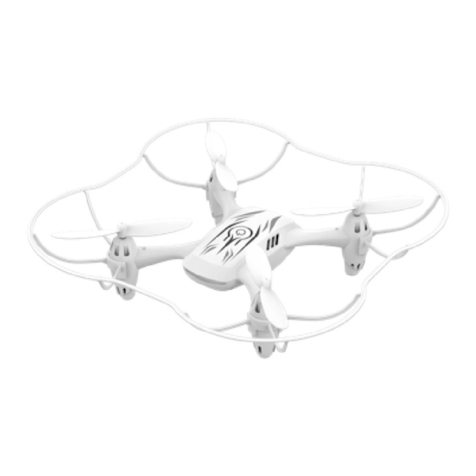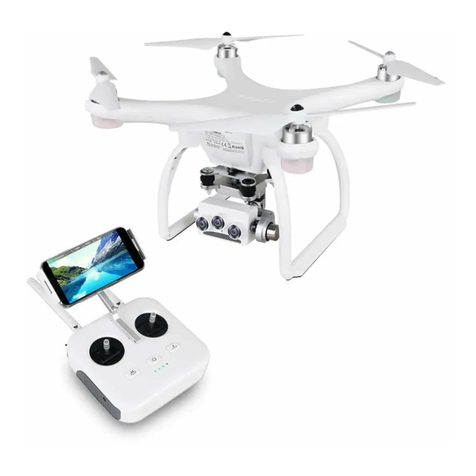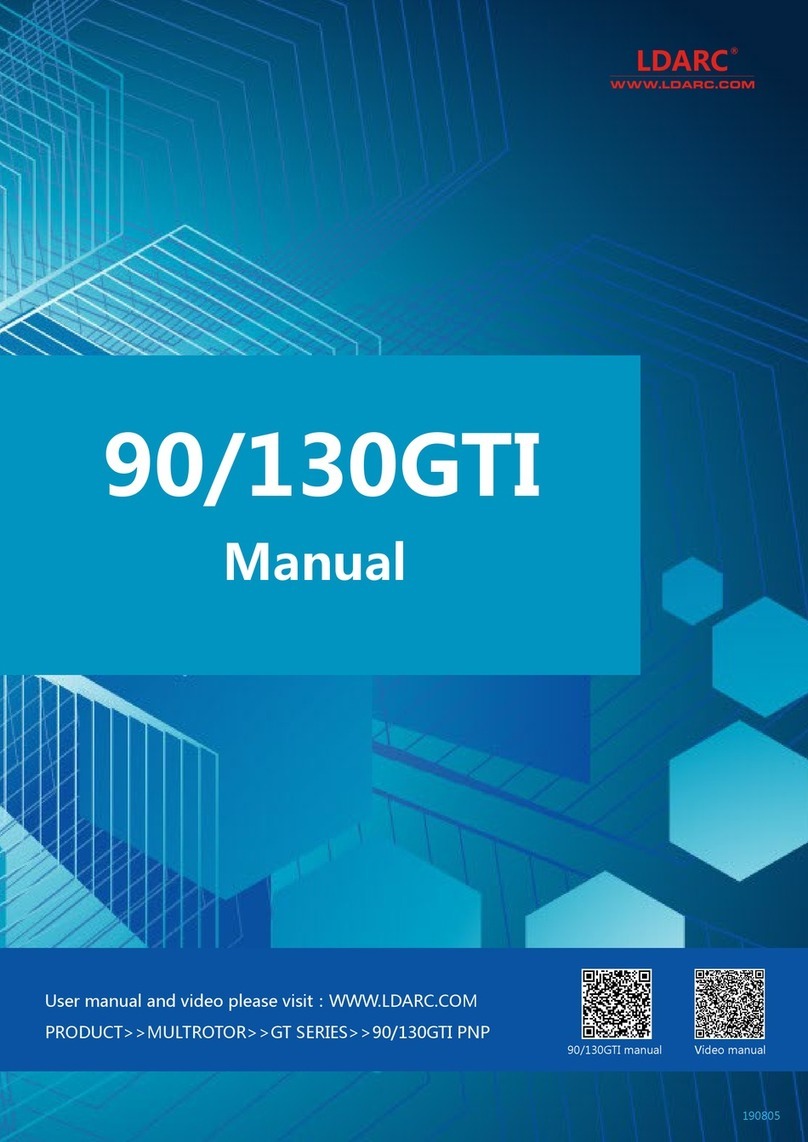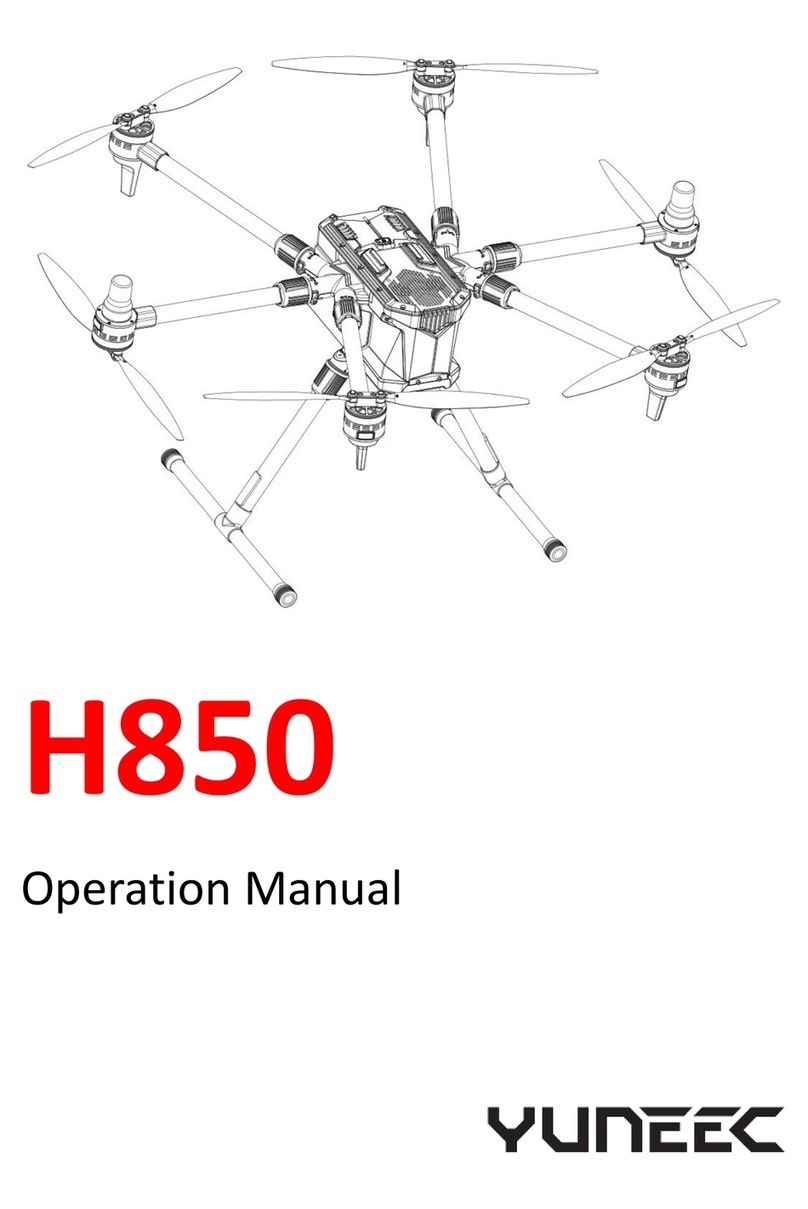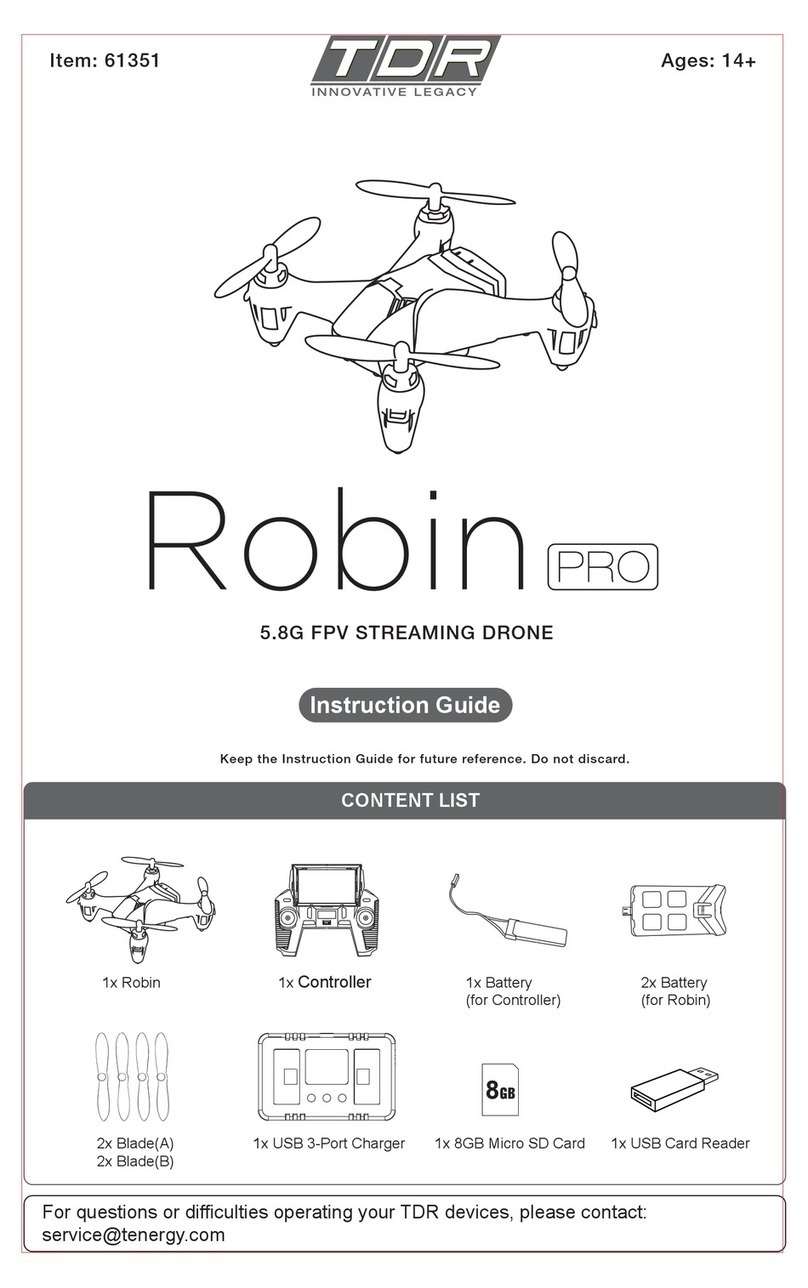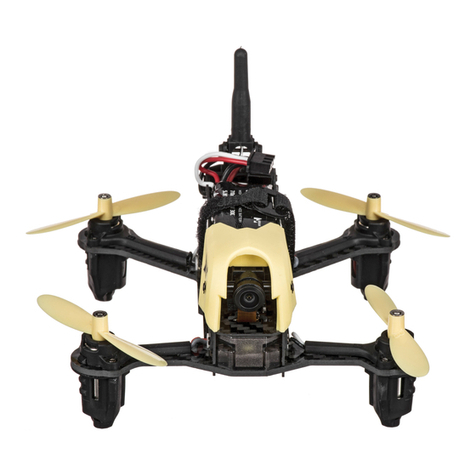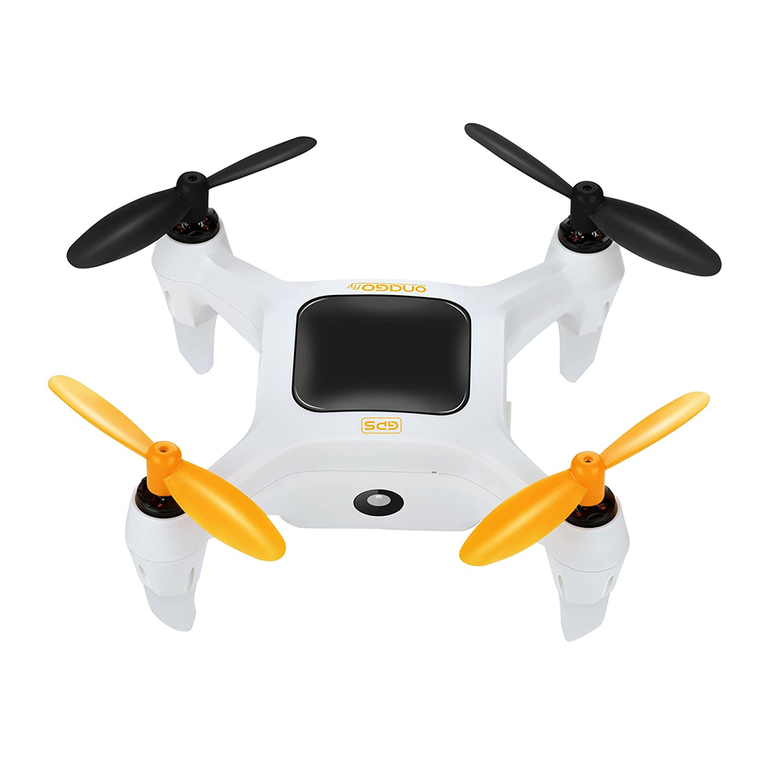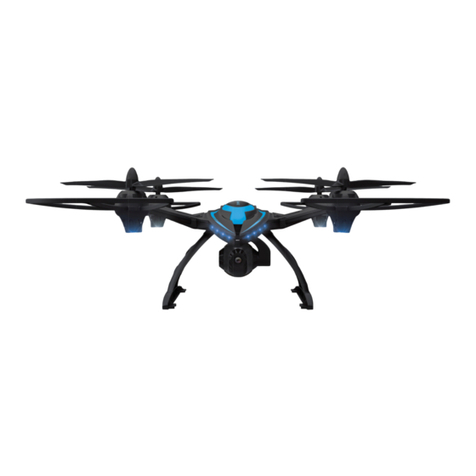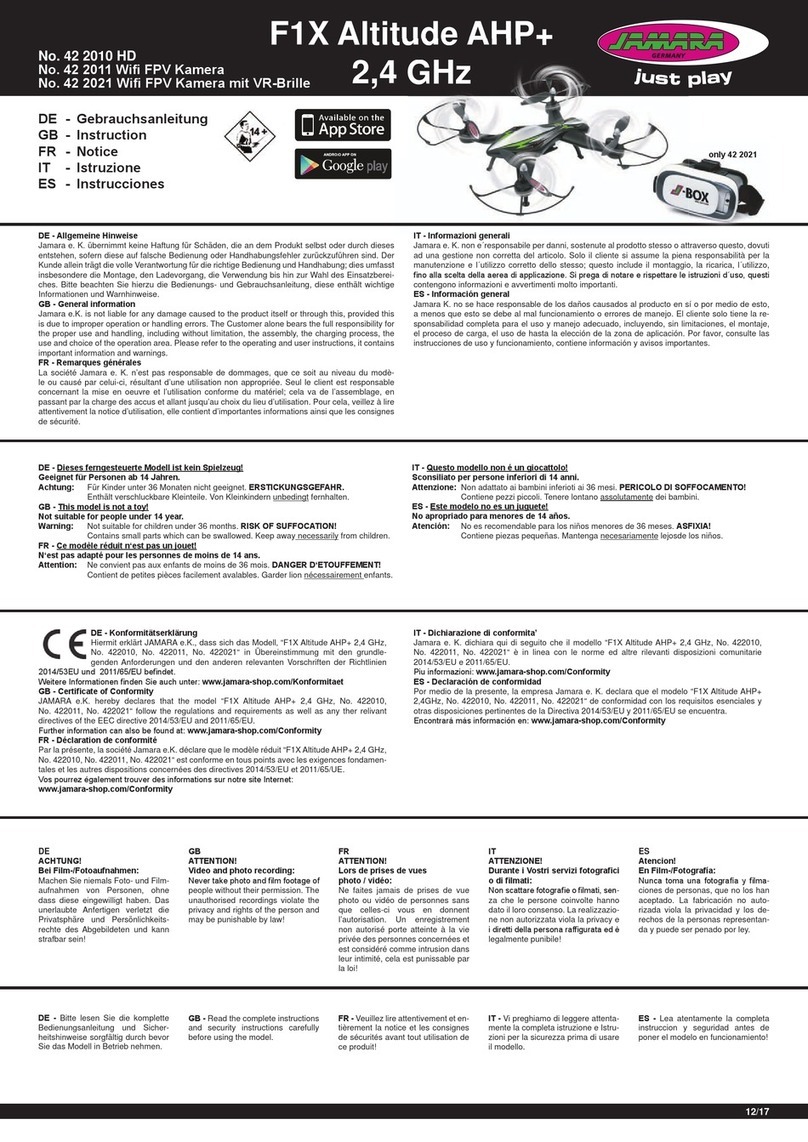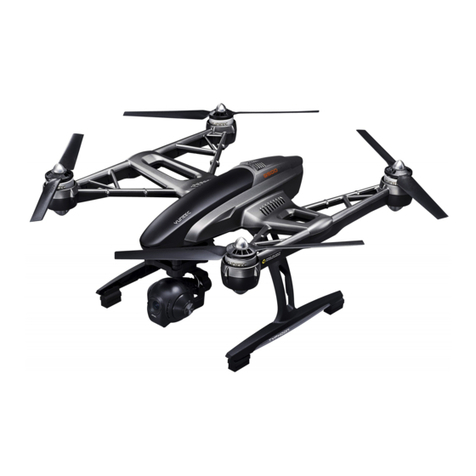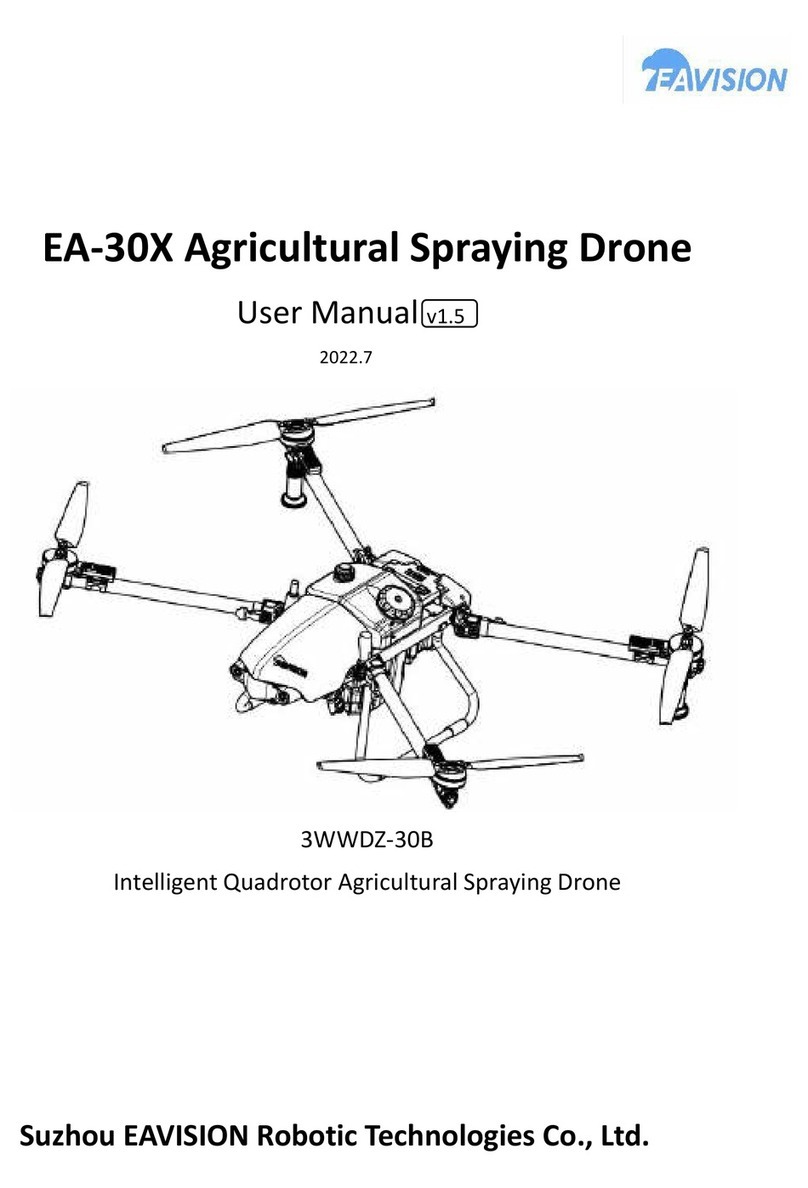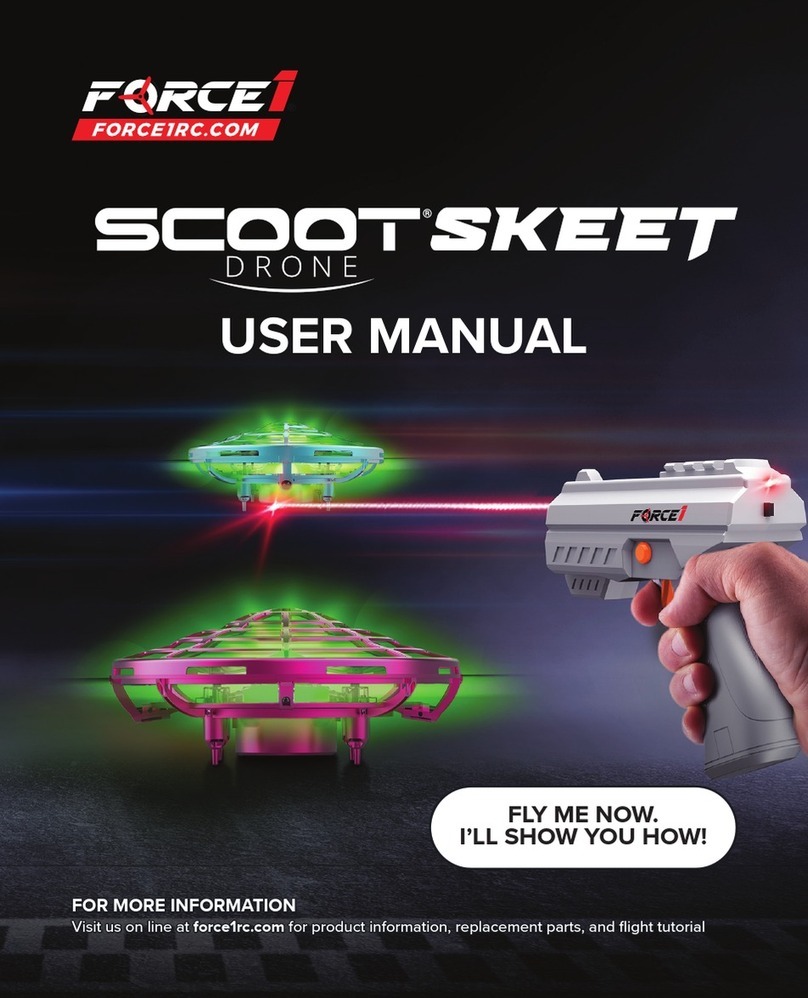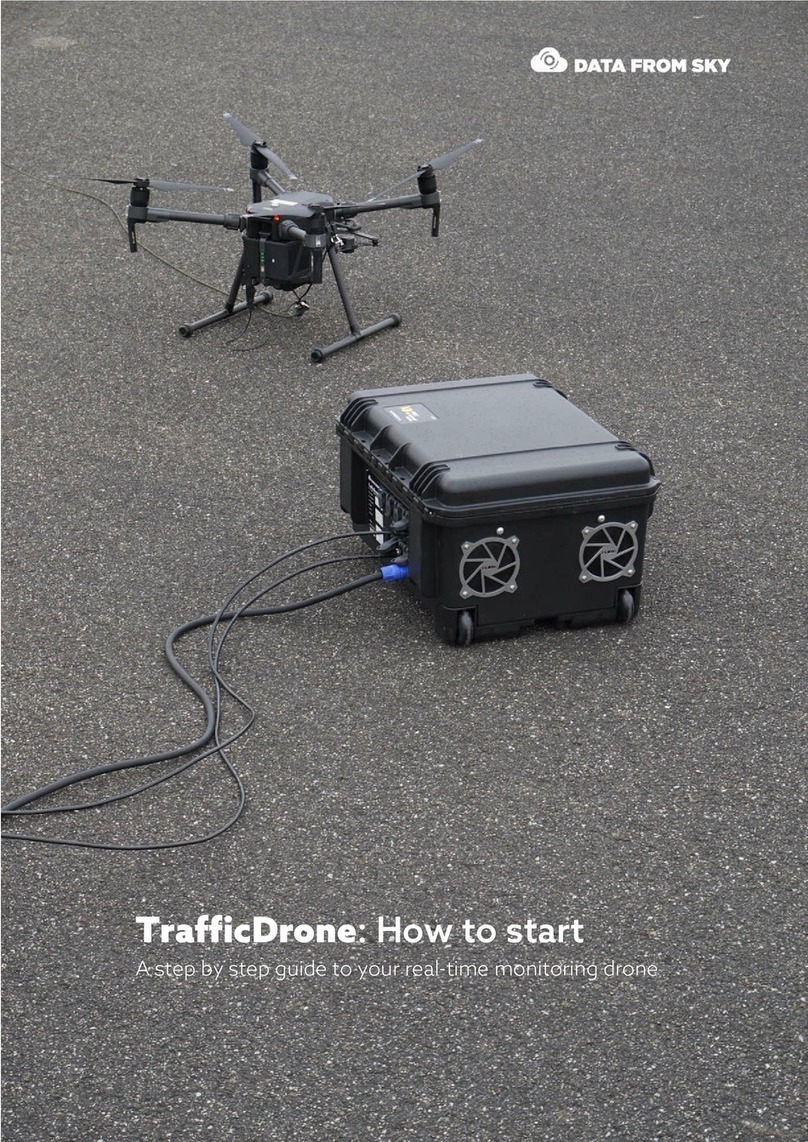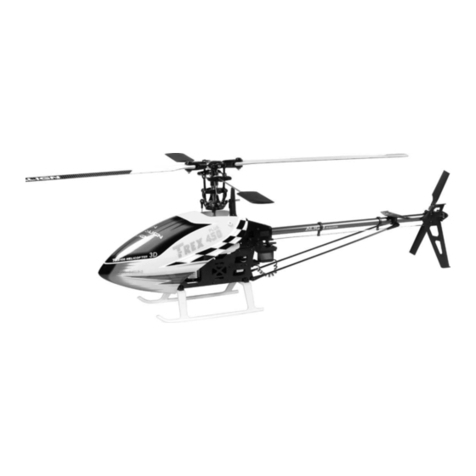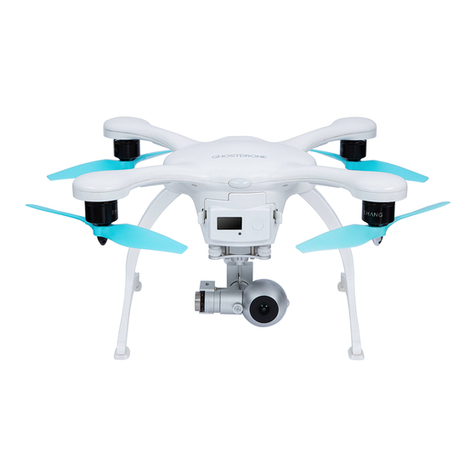Tenergy 61336 Manual

Instruction Guide
Phoenix
INTERCHANGEABLE MODULAR DRONE
INNOVATIVE LEGACY
CONTENTS LIST
Ages: 14+Item: 61336
1x Phoenix 4x Blade Guard 4x Blade
1x Camera 1 x Obstacle
Avoidance Module
1x Screw Driver
1x USB Charging Cable
1x Controller 1x Battery
For questions or difficulties operating your TDR devices, please contact:
service@tenergy.com
Keep the Instruction Guide for future reference. Do not discard.

02
DISCLAIMER
FLY RESPONSIBLY
The Federal Aviation Administration requires registration of many drones flown in the US, for hobby or
commercial purposes. To learn more about drone registration requirements, visit "Know Before You Fly" at:
www.knowbeforeyoufly.org
Read this disclaimer and instructions thoroughly before operating this device.
THE USE OF THIS PRODUCT IS A SIGN OF YOUR COMPLIANCE WITH THIS
DISCLAIMER. You are responsible for your own actions, behavior, and conduct
while using this device. You agree to use this product in such a way that you will
comply with all local and federal regulations, including, but not limited to,
personal privacy laws. Tenergy Corporation will not be held liable for any dam-
ages or legal responsibilities resulting from the use of this product. This product
is NOT suitable for anyone under the age of 14. For more information and
guidance, please visit www.TDRWorld.com
Safety guidelines for sUAS recreational users
- Follow community-based safety guidelines, as developed by organizations such as the Academy of
Model Aeronautics (AMA).
- Fly no higher than 400 feet and remain below any surrounding obstacles when possible.
- Keep your sUAS in eyesight at all times, and use an observer to assist if needed.
- Remain well clear of and do not interfere with manned aircraft operations, and you must see and
avoid other aircraft and obstacles at all times.
- Do not intentionally fly over unprotected persons or moving vehicles, and remain at least 25 feet
away from individuals and vulnerable property.
- Contact the airport and control tower before flying within five miles of an airport or heliport.
- Do not fly in adverse weather conditions such as in high winds or reduced visibility.
- Do not fly under the influence of alcohol or drugs.
- Ensure the operating environment is safe and that the operator is competent and proficient in the
operation of the sUAS.
- Do not fly near or over sensitive infrastructure or property such as power stations, water treatment
facilities, correctional facilities, heavily traveled roadways, government facilities, etc.
- Check and follow all local laws and ordinances before flying over private property.
- Do not conduct surveillance or photograph persons in areas where there is an expectation of privacy
without the individual’s permission (see AMA’s privacy policy).
- Before each flight, check and ensure the drone and controller are not damaged, and that all
components are working in accordance with the user instruction .
- If you want to use unmanned aircraft systems for a commercial purpose: you can apply for an
exemption from the FAA to operate commercially. For more information about how to apply for an
exemption, visit the FAA’s “Section 333”.

03
ADULT SUPERVISION REQUIRED
An adult should check the unit and LiPo battery for damages prior to each use. Drones have rotating blades that
move at high speeds, posing a danger of damage and injury. Pilots are responsible for any action that results in
damages or injury from improper operation of the drone. Adequate flying space is required. Avoid flying near interior
fans and/or vents as they may affect your ability to control the drone. Keep a safe distance from streets, public
thoroughfares, and power lines. Never attempt to retrieve the drone from any location higher than your reach
(rooftops, trees, etc) or any location that poses a safety hazard. Never fly the drone at night. Keep drone in sight at
all times during operation. Discontinue operation immediately if the drone flies out of your field of view. Do not fly
near spectators. Keep away from pets, as they may become excited over R/C vehicles. Keep spinning rotors away
from fingers, hair, eyes, and other body parts. Always launch from a flat surface. Never leave Drone unattended
while it is turned on. Read all enclosed information before operating.
LITHIUM BATTERY CAUTIONS
LiPo batteries pose a serious hazard when used improperly and may result in overheating, fire, or explosions. Read
all precautions and instructions regarding the care and use of LiPo batteries prior to use. The enclosed LiPo battery
is to be used only with the vehicle and charger included in this package.
- Keep away from flammable materials
- Do not expose to direct sunlight
- Do not expose to extreme heat
- Do not drop or make subject to strong impact
- Keep dry and away from moisture
- Remove exhausted batteries as soon as possible and discard properly
- Remove all batteries when toy is inactive for long periods
- The supply terminals are not to be short circuited
LiPo Battery Disposal: LiPo batteries must be recycled and disposed of properly. LiPo batteries should not be
disposed of with household waste. Check your local laws and regulations for information on proper battery
disposal. If you are unable to identify the applicable rules in your area, please reference the instructions of
the battery manufacturer.
WARNING: Batteries are harmful if swallowed. Please keep away from children.
Waste Electrical and Electronic Equipment (WEEE)
The crossed-out dust bin symbol indicates that batteries
(primary, rechargeable, button cells, packs, etc) must not
be put in household waste. These items may be composed
of hazardous materials.
Please help protect the environment from health risks by
disposing of the batteries properly, and taking them to a
local collecting facility for safe recycling.
This device complies with Part 15 of the FCC Rules. Operation is subject to the
following two conditions:
1. This device may not cause harmful interference.
2. This device must accept any interference received, including interference that
may cause undesired operation.
Note: This equipment has been tested and found to comply with the limits for a
Class B digital device, pursuant to Part 15 of the FCC Rules. These limits are
designed to provide reasonable protection against harmful interference in a
residential installation. This equipment generates, uses and can radiate radio
frequency energy and, if not installed and used in accordance with the instructions,
may cause harmful interference to radio communications. However, there is no
guarantee that interference will not occur in a particular installation. If this
equipment does cause harmful interference to radio or television reception, which
can be determined by turning the equipment off and on, the user is encouraged to
try to correct the interference by one or more of the following measures:
- Reorient or relocate the receiving antenna.
-Increase the separation between the equipment and receiver.
-Connect the equipment into an outlet on a circuit different from that to which the
receiver is connected.
-Consult the dealer or an experienced radio/television technician for help.
This product is in compliance with the essential
requirements and other relevant provisions of
Directive 1999/5/EC.
When this appliance is out of use, please remove all
batteries and dispose of them separately. Bring electrical
appliances to the local collecting points for waste electrical
and electronic equipment. Other components can be
disposed of in domestic refuse.
FCC Statements

04
Product Features
Advance auto-hovering, auto-launch & auto-return
technologies
6-axis Flight Control System
WiFi real-time video streaming
0.3MP WiFi camera
Advance headless flight mode
4-way 3600stunt rolls (left, right, forward, backward)
Capable of outdoor flight
Modular design for easy upgrades and maintenance
Obstacle avoidance flight technologies

05
Diagrams
1. Blade Guard
2. Propeller
3. Power Button
- Power On: Long press
- Power Off: Long press again
4. Camera Module
5. Motor
6. Battery
7. Obstacle Avoidance Module
8. Landing Gear
Controller
1. Charging Indicator
2. Throttle/Rudder Stick
3. Left/Right Turning Trimmer
4. Power Switch
5. Camera Lens Up
6. Camera Lens Down
7. 360° Roll
8. Charging Port
9. Headless On/Off
10. LED On/Off (drone)
11. Backward Trimmer
12. Forward Trimmer
13. Left/Right Side-Fly Trimmer
14. Elevator/Aileron (Direction) Stick
15. Power Indicator
16. Auto Takeoff / Auto Landing
17. Speed/Sensitivity Switch
18. Photo: Short Press
Video: Long Press
19. Auto Return
15
14
18
19
16
17
Launch
Landing
SPEED

06
Charging and installing battery for the drone
Charging the controller
1. Power off the drone, press the battery release button, take out the
battery.
2. Connect the USB Charging Cable to the battery.
3. Connect the USB Charging Cable to a USB power source (e.g.:
USB adapter, USB port on a computer) to start charging the
battery. The red charging light on the USB Charging Cable will turn
on when charging is complete.
4. Insert the battery in to the drone after battery is fully charged.
Charging time: approximately 90 minutes.
Flying time: approximately 7 minutes.
1. Turn off the controller, connect the USB
Charging Cable to the charging port of
controller.
2. Connect the USB Charging cable to a USB
power source (e.g.: USB adapter, USB port
on a computer) to start charging the
battery. The red charging light will turn on
when charging is complete.
Charging time: approximately 60 minutes.
Run time: approximately 60 minutes.
Battery Release Button
Cautions:
Always unplug/remove LiPo battery when not in use.
Cool down battery after use to room temperature before charging.
Charge battery in an isolated area.
Never leave battery unattended while charging.
If battery swells, unplug it immediately. Do not use it again.
Do not modify, heat up or get the battery wet.
Charge the battery with the provided charger only.

07
Disassemble the
Blade Guard
Install the
Blade Guard
Blade Guard installation
1. Take out the screw on the main axis bar with the provided screw driver.
2. Insert the Blade Guard with the main axis bar.
3. Use screwdriver to tighten the screw.
NOTE: Check the Blade Guard every time the drone crashes. Replace the Blade Guard right away
if it is broken.
Accessories installation
Obstacle Avoidance Module installation
1. Match the Obstacle Avoidance Module with the socket at the bottom of the drone.
2. Push the Obstacle Avoidance Module according to the direction shown on the module to mount.
Camera Module installation
1. Push the Camera Moduel all the way into the socket at the bottom of the drone.
2. Clip the antenna onto the antenna holder.

08
Binding drone to the controller
Start / Stop the motors
1. Power on the drone unit and place on level surface, the LED on drone will flash continuesly.
2. Turn on the controller.
3. Push the Throttle Stick to the up position, the LED light on the drone will change from flashing to
solid on after binding has been successful.
Step 1 Step 2 Step 3
Start the motors (Takeoff):
Press the Auto Takeoff button, the blades will start to spin. You can now push the Throttle
Stick up slightly to takeoff.
Stop the motors (Landing):
Press the Auto Takeoff button during the flight, the drone will automatically land. Blades will
stop spinning after landing.

09
Left
Fly
Right
Fly
Basic operation controls
Basic operation:
Left stick controls altitude and direction.
Right stick controls the rotation forward, backward, left or right movement.
Photo Taking Video Taking
Short press the
button to take a
photo.
Long press the
button to shoot
a video.

10
Special operation controls
Obstacle Avoidance Module
Mount the Obstacle Avoidance Module to the bottom of the drone. When it detects obstacles
within 2~3ft (depend on environment/object), the drone will stop approaching and avoid
the obstacle automatically. This feature will work automatically when it is flying at least 3ft
above the ground. This feature will reduce the chance of crashing.
Caution: Please do NOT test this feature on people.
Auto Hover
Push the Throttle Stick up slightly and release it, the drone will stay at a specific height
steadily. Pull the Throttle Stick down to descent the drone.
Note:The 360°roll function will not work if the drone is mounted with Obstacle Avoidance
Module and Camera Module, make sure take out these two module before using this
function. (Turn off the controller and drone before removing the modules.)
The 360°roll function can not be used when battery power is low.
360° Roll
1. Bring the drone to a mid-air hover, without flying
towards any direction. Remove finger from the
direction (Elevator/Aileron) stick once in hover.
2. While hovering, press the 360°Roll button. The
remote will start beeping rapidly as the drone will
enter rolling-ready mode.
3. While the rolling-ready move, tap the direction
stick in the direction you want the drone to flip/roll.
2~3ft
2~3ft
2~3ft2~3ft

11
Special operation controls
Speed/Sensitivity Selection
The drone's flying speed and sensitivity can be adjusted by pressing the Speed Selection
Button. Pressing the button will switch the speed in the following speed setting:
Low > Medium > High > Low
Low
(1 beep)
Medium
(2 beeps)
High
(3 beeps)
Tip: It is best to start flying in default low speed setting until you are comfortable to the flying speed.
Flying speed/sensitivity setting can be adjusted before or during flight. Each time the drone starts,
the flying speed will be reset to default (low speed) setting..
Headless Mode
In headless mode, drone flies from your viewpoint no matter which direction the drone is flying.
E.g.: if you push the controller to left the drone will fly to left, from your viewpoint - regardless of what
direction the drone is facing/pointing. Which allows you to give up worrying about orientation of the
drone altogether.
To enter headless mode:
1) Before taking off, position the drone in such a way that "its front
is your front".
2) Press down the Headless Mode button (the Elevator/Aileron
stick) to enter headless mode.
3) Press the button again to get out of headless mode.
Note:
- The headless mode can only be used at medium and high speed setting when Obstacle
Avoidance Module is installed.
- To use headless mode at low speed setting, remove Obstacle Avoidance Module.
- The rear LED on the drone will flash continuously during headless mode.

12
Specifications
Drone
LWH 330x330x68mm / 13x13x2.7inch
Weight 135g / 4.7oz
Operating Temperature 0°C to 40°C
Control Distance 70m / 230ft
App-control Range 35m / 115ft
FPV Transmission Range 35m / 115ft
Camera Tilting Angle 90° Degree
Battery Capacity 650mAh
Flight Time approx. 6.5 min
Charge Time approx. 90 min
Controller
LWH 221x120x50mm / 8.7x4.7x2inch
Weight 154g / 5.4oz
Operating Temperature 0°C to 40°C
Built-in Battery Capacity 200mAh
Charging Method USB
Run Time approx. 60 min
Charge Time approx. 60 min
Auto Return
Press the Auto Return button during the flight, the drone will trace the shortest way flying back to
the takeoff point. For best retults, align the drone body with contoller toward the same direction
before/during binding.
Controller and drone should
face the same direction when binding
Front: Yellow Blades
Special operation controls

13
Blade installation
1. Insert the blades with the main axis bar.
2. Use screwdriver to tighten the screw.
Blades must be installed as shown:
Front: use Yellow Blade A and Yellow Blade B
Rear: use Black Blade A and Black Blade B
Front
(Yellow Blades)
Rear
(Black Blades)
A
Yellow B
Yellow
B
Black A
Black
Note:
The letters A and B are printed on front side of blades.

14
Flying Tips
Maintenance
When launching the drone, face the same direction as the drone. The yellow blades should be
in front.
Practice launching, hovering, and landing before attempt to learn other moves.
Flying 2 to 3 feet above the ground will reduce ground turbulence and make flying easier.
When first attempting to fly in a different direction, start by tapping the Direction Stick until you
get the hang of it. Always move controls slowly until you become comfortable operating the
drone.
Once you’ve mastered flying in different directions, practice rotational controls. Keeping the
drone facing the same direction as you makes flying easier and more intuitive.
Stay 2 to 3 feet away from walls and ceilings, as the drone will be drawn towards them if you
fly too close.
If the propeller blades come in contact with another object, or you crash, throttle down
immediately to prevent further damage.
If anything prevents the drone’s blades from spinning, or they become jammed, THROTTLE
DOWN IMMEDIATELY. Do not attempt to fly until obstruction has been removed and damage
fixed.
If the drone flies too far away (beyond the range of control for the remote) the drone will
AUTO-LAND to prevent the drone from flying away or out of control.
Over time, debris such as loose hair or carpet fibers may get wound in the blades and motors.
The debris should be regularly removed and cleaned to prevent buildup, and to avoid poor
flying performance.

15
Troubleshooting
Problem/Issue Cause Soluction
1Cannot bind drone to
controller
a) Battery
b) Electromagnetic interference
c) Out of range
a) Make sure the batteries in both drone and
controller are fully charged
b) Clear out objects between drone and controller
c) Put drone and controller closer to each other
2 Drone does not turn on a) Battery too low
b) Battery not fully plugged in
a) Charge battery
b) Battery fully plugged in the correct direction
3 Controller does not turn on
a) Switch didn't turn on
b) Battery didn't install correctly
c) Battery power too low
a) Ensure switch is turned on
b) Ensure battery fully plugged in correctly and
securely
C) Charge the battery
4
Blades do not spin or
drone has difficulty taking
off the ground, LEDs are
flashing
Battery power level is too low Fully recharge the battery
5Unstable drone flying /
strong vibration Damaged blade(s) Replace the blade(s)
6
All blades spin but drone
does not take off the
ground or not flying
properly
Blades are not installed correctly Reinstall the blades following the "Blade
Installation" section on page 13
7Drone crashes
immediately Blades are not installed correctly Reinstall the blades following the "Blade
Installation" section on page 13
8Drone crashes during 360°
Roll
Not enough space to perform
the rolling function
Ensure the drone is at least 9ft from ground and
9ft away from all other objects in all direction
9
Drone can not perform
360° Roll and LEDs are
flashing
Battery power level is too low Fully recharge the battery
10
Drone can not perform
360° Roll but LEDs are
normal
Obstacle Avoidance Module
is installed
Remove the Obstacle Avoidance Module

16
Thank You
Happy Flying
